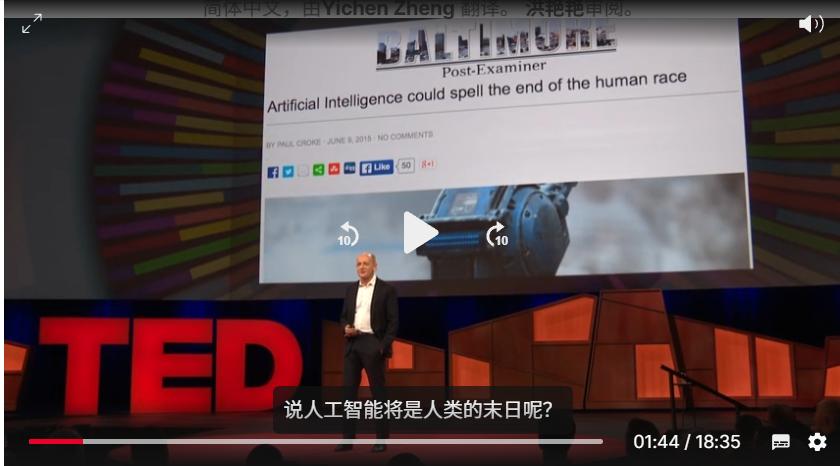
Read More《「我怕活不到毕业」,AI引爆美国退学潮,18岁PPT式创业震惊YC之父》
Positive Comments: Youth Awakening Amid AGI Anxiety Drives Dual Breakthroughs in Technology and Ethics
In 2025, the wave of AI dropouts at Harvard and MIT, on the surface, reflects the collective anxiety of the youth towards AGI (Artificial General Intelligence). In reality, it mirrors the new generation of tech practitioners’ keen perception of technological trends and their proactive sense of responsibility. This phenomenon not only accelerates the innovation process in the AI field but also promotes in – depth reflection on technological ethics and safety in society, and its positive significance deserves recognition.
First of all, the entrepreneurial actions of the “accelerationists” inject fresh innovation into the implementation of AI technology applications. As reported in the news, many students as young as 20 or even younger believe that “AI waits for no one, and being a step late may mean missing the opportunity.” This sense of urgency regarding the speed of technological iteration prompts them to break away from the traditional academic path and directly engage in entrepreneurial practice. Historical experience shows that young people often lead the key breakthroughs in technological revolutions – from Bill Gates and Mark Zuckerberg to today’s OpenAI team. The sensitivity of young entrepreneurs to emerging technologies and their courage to take risks are important driving forces for industrial transformation. At present, the development of AGI has entered a critical window period. The dropouts of these top – university students are, in essence, seizing technological niches through action. With the interdisciplinary knowledge (such as computer science, mathematics, and ethics) they have accumulated at top institutions and their quick response to market demands, they may develop disruptive products in vertical fields such as AI in healthcare, education, and industry, accelerating the transformation of technology from the laboratory to practical applications.
Secondly, the “doom – sayers” turning to the field of AI safety fill the gaps in human cognition and action in dealing with AGI risks. From Alice Blair joining the AI Safety Center as a technical writer to Adam Kaufman engaging in the research of “deceptive AI systems,” the choices of these students reflect a clear understanding of the “double – edged sword” nature of technology. As Professor Stuart Russell said, “Uncontrollable AI is like an uncontrollable atomic bomb.” Currently, the academic and industrial circles’ research on AGI safety is still in its early stage, and more professional talents are urgently needed. The dropouts of these top students are, in essence, taking on the role of “technology gatekeepers” actively. They abandon the traditional academic path and devote their energy to cutting – edge topics such as AI alignment and risk assessment. This not only speeds up the R & D of safety technology but also promotes social attention to AI risks through practical cases. For example, the US State Department’s 2024 report has pointed out that AI poses an “extinction – level risk.” The practices of these young researchers are a specific response to the policy – level appeal, which helps to build a more complete AI governance system.
Finally, the wave of dropouts forces the innovation of the education system and social concepts. When students think that “university courses can never keep up with the development of AI” and “degrees are souvenirs from the pre – ChatGPT era,” they are actually challenging the traditional education model. Harvard’s urgent launch of an AI ethics course and MIT’s withdrawal of a paper advocating AI productivity are the rapid responses of universities to students’ needs. This interaction promotes the transformation of educational content towards “cutting – edge technology + ethical speculation.” In the future, it may give rise to more interdisciplinary and practical courses (such as AI safety engineering and AGI governance), cultivating compound – type talents more in line with the needs of the technological era. At the same time, society’s perception of the “path to success” is also being rewritten. The past linear path of “graduating from a top – tier school and getting a job at a big company” is being supplemented by the non – linear choice of “tech entrepreneurship and solving human – level problems,” which helps to stimulate the innovation potential of more young people.
Negative Comments: The Group Anxiety Behind the Dropout Wave Hides Multiple Potential Risks
Although the dropout wave shows the technological sensitivity and social responsibility of the youth group, the group anxiety and the tendency of irrational decision – making behind it also need to be vigilant. Overemphasizing the sense of urgency of “AGI is coming soon” may lead to imbalanced individual development, misallocation of industry resources, and even trigger a technology bubble.
On an individual level, students who drop out to start a business or engage in the safety field may face problems of insufficient knowledge reserves and weak risk – resistance abilities. The education at top universities is not only about knowledge transfer but also a process of thinking training and network building. For example, the curriculum systems of Harvard and MIT have been iterated over decades, covering multiple dimensions such as mathematical foundations, interdisciplinary methodologies, and industry practices. These knowledge bases are the underlying support for dealing with complex technological problems. Dropping out too early may limit students’ technological horizons. As Yann LeCun pointed out, “The learning ability of existing large models is inferior to that of a cat.” If students choose their directions based only on anxiety about AGI rather than solid technological judgments, they may fail in entrepreneurship due to a lack of in – depth understanding of technology. In addition, entrepreneurship itself is a high – risk activity. The phenomenon of “18 – year – old PPT – style entrepreneurship” criticized by Paul Graham, the godfather of Y Combinator, is a typical case of “entrepreneurship for the sake of entrepreneurship.” Relying only on a paper or a concept to get a small investment and then dropping out, lacking a systematic understanding of market demand, team management, and resource integration, these students may eventually become victims of the “technology bubble.”
On an industry level, the group dropout may lead to misallocation of resources and homogeneous innovation in the AI field. Currently, the AI track has shown a polarization between the “accelerationists” and the “safety advocates,” but technological development requires a balance of diverse forces. If a large number of top talents flock to AGI development or safety research, they may neglect the “small and beautiful” applications of AI in vertical fields such as healthcare, environmental protection, and agriculture, resulting in a single – minded innovation direction. For example, Yann LeCun, the chief AI scientist at Meta, believes that “the capabilities of existing models are limited,” and Gary Marcus bet with Elon Musk that “no super – human AGI will be seen by the end of 2025.” These doubts indicate that the actual progress of AGI may be slower than some students’ expectations. If students drop out of school due to excessive anxiety, they may face “skill mismatch” in the future when the development of AGI fails to meet expectations. They will neither have a complete academic background nor have accumulated core competitiveness in entrepreneurship, and instead become victims of “technology anxiety.”
On a social level, the dropout wave may magnify the misunderstanding of “technological determinism” and ignore the development needs of other key fields. Although AGI is important, the progress of human society requires the collaboration of multiple fields such as biotechnology, clean energy, and public health. When “Will humans still be needed in the future world?” becomes the core anxiety of students, it may lead to insufficient attention to other technologies (such as carbon – neutral technologies and brain science). For example, a Harvard survey shows that “half of the students are worried about the impact of AGI on employment.” This anxiety may make them ignore the possibility of AI – human collaboration in traditional industries (such as manufacturing and education) and instead flock to the “hot spots,” ultimately causing an imbalance in social innovation resources.
Advice for Entrepreneurs: Find a Balance Between Technological Enthusiasm and Rational Judgment
Facing the dropout wave and the entrepreneurship boom triggered by AGI, entrepreneurs need to maintain a clear – headed understanding and find a balance between technological sensitivity and rational decision – making. The following suggestions are for reference:
Assess personal abilities: Clearly determine whether dropping out is necessary and understand the complementarity between academics and practice
The educational resources at top universities (such as interdisciplinary courses, mentor networks, and laboratory equipment) are irreplaceable. If the entrepreneurial direction requires a solid theoretical foundation (such as AI safety and AGI alignment), it is recommended to complete the core courses first and then accumulate practical experience through internships and project – based research. If the entrepreneurial direction relies more on rapid trial – and – error (such as AI application – layer products), a “semi – suspension” mode (such as retaining school status and completing studies in stages) can be considered to avoid completely interrupting academic training.Identify real needs: Distinguish between technological hot spots and false needs and avoid blind following
Be vigilant against false needs driven by “AGI anxiety.” For example, some “AI safety” startup projects may only stay at the conceptual stage, lacking actual implementation scenarios. Some “accelerationist” projects may rely too much on capital infusion and ignore the real needs of users. It is recommended to verify the authenticity of needs through market research (such as user interviews and competitor analysis) and give priority to tracks with high “technological feasibility + market necessity.”Focus on long – term value: Find sustainable tracks in AI safety and application innovation
Whether they are “accelerationists” or “safety advocates,” entrepreneurs need to focus on the long – term social value of technology. For example, in the field of AI safety, they can focus on “small and refined” technologies (such as AI ethics auditing tools and interpretable models) instead of blindly chasing grand narratives of “saving humanity.” In the field of application innovation, they can dig deep into vertical scenarios (such as AI – assisted medical image diagnosis and AI – enabled precision agriculture) and build core barriers by solving specific problems.Maintain an open mind: Stay connected with the academic and industrial circles and avoid information cocoons
Even if choosing to drop out and start a business, entrepreneurs should maintain cooperation with universities and research institutions (such as joint laboratories and academic advisors) to keep abreast of the latest technological trends. At the same time, actively participate in industry exchanges (such as AI safety summits and application innovation forums) to avoid decision – making biases caused by information isolation. For example, Harvard and MIT have launched AI ethics courses, and entrepreneurs can supplement their knowledge by auditing courses or online learning to avoid “technological arrogance.”
In short, the dropout wave triggered by AGI is a typical phenomenon during the period of technological change. It shows the responsibility of the youth group and also exposes the risks of group anxiety. Entrepreneurs need to respond with “rational enthusiasm.” They should seize the technological window while respecting knowledge and market laws, pay attention to the potential impact of AGI while seeing the possibility of the diversified development of human society. Only in this way can they move forward more steadily and further in the technological wave.
创业时评《「我怕活不到毕业」,AI引爆美国退学潮,18岁PPT式创业震惊YC之父》
- Startup Commentary”The Incomplete Evolution History of Bathing Centers”
- Startup Commentary”Starting from 358,800 yuan, Maserati Slashes Prices Drastically to Survive”
- Startup Commentary”Monopoly: Always the Best Business”
- Startup Commentary”A PE Giant Spent $6.6 Billion on a Crematorium”
- Startup Commentary”In a Low-Sports Year, Social Assets Still Hold Great Value”





